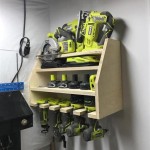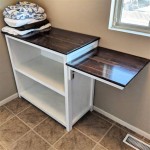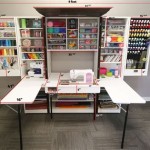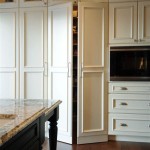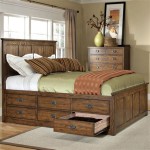Maximizing Storage Space With Three Drawer File Cabinets
Three-drawer file cabinets are a staple in many offices and homes, offering a compact yet efficient solution for organizing documents and other essential items. The effective use of these cabinets hinges on understanding their capabilities and implementing strategies to optimize the available space. A well-organized three-drawer file cabinet can improve workflow, reduce clutter, and enhance overall productivity.
The dimensions of a typical three-drawer file cabinet contribute to its versatility. Often fitting comfortably under a desk or in a corner, it offers a balance between storage capacity and footprint. This makes it an ideal choice for environments where space is limited. The metal construction of most file cabinets contributes to their durability and ability to withstand the weight of numerous files.
However, simply owning a three-drawer file cabinet is not enough. To truly maximize its storage potential, organizations and individuals must adopt systematic approaches to filing, labeling, and space utilization. Neglecting these factors can lead to inefficiency and underutilization of the available space.
Effective Filing Systems for Optimal Organization
The foundation of maximizing storage space in a three-drawer file cabinet lies in the implementation of an effective filing system. A well-designed system allows for quick retrieval of documents and prevents the buildup of unnecessary clutter. Several organizational methods can be employed, each with its own advantages and disadvantages, depending on the specific needs of the user.
Alphabetical filing, for example, is a common approach suitable for organizing client files, invoices, or any documents where the name or subject matter is the primary identifier. This method is straightforward and easy to maintain, but it can become cumbersome when dealing with a large volume of files under a single letter. The use of color-coded labels can improve the efficiency of an alphabetical filing system by visually distinguishing different sections or categories.
Numerical filing, on the other hand, assigns a unique number to each document or file. This system is particularly useful for organizations that handle sensitive or confidential information, as it can be combined with a cross-reference index to maintain privacy. Numerical filing requires more initial setup than alphabetical filing, but it offers greater scalability and can be readily integrated with database management systems.
Chronological filing organizes documents by date, either in ascending or descending order. This method is well-suited for managing records related to projects, contracts, or correspondence where the timeline is a critical factor. Within a chronological system, documents can be further segmented by month, quarter, or year for enhanced organization.
Subject-based filing categorizes documents according to their topic or subject matter. This system is ideal for organizing research materials, reports, or any documents that pertain to specific areas of interest. Subject-based filing requires careful consideration of the categories to be used and a consistent approach to assigning documents to the appropriate category.
Regardless of the chosen method, consistency is paramount. Once a filing system is established, it is crucial to adhere to it rigorously to avoid confusion and maintain organization. Regular purging of outdated or irrelevant documents is also essential to prevent the file cabinet from becoming overcrowded.
Optimizing Drawer Space with Efficient Packing Techniques
Beyond the filing system itself, the way documents are arranged within the drawers directly impacts storage capacity. Efficient packing techniques can significantly increase the number of files that can be accommodated in a three-drawer file cabinet.
Vertical filing, where documents are stored upright, is generally the most space-efficient method. This approach allows for easy browsing and retrieval of files. Proper support is crucial to prevent files from slumping or bending, which can waste space and damage documents. File folders and hanging file folders provide the necessary support and organization within the drawers.
Hanging file folders, in particular, offer a versatile solution for organizing and protecting documents. These folders suspend from the rails of the file cabinet, creating individual compartments for each file. Hanging file folders are available in various sizes and colors, allowing for customization and visual organization. Within each hanging file folder, individual file folders can be used to further categorize and protect documents.
The use of dividers or file supports is also important for maintaining organization within the drawers. These accessories help to keep files upright and prevent them from shifting or falling over. Dividers are especially useful in drawers that are not completely full, as they provide additional support and prevent files from sliding around. File supports can be adjusted to accommodate varying thicknesses of files, ensuring a snug and organized fit.
Careful consideration should be given to the type of file folders used. Thicker file folders take up more space than thinner ones. Choosing the appropriate thickness for the documents being stored can help to optimize space utilization. Manila file folders are a common and economical choice for general filing purposes, while heavier-duty file folders are recommended for documents that require extra protection.
Overstuffing file folders should be avoided, as this can lead to damage and make it difficult to retrieve documents. A general rule of thumb is to limit the number of documents in a file folder to no more than 75. If a file folder becomes too full, it should be split into multiple folders or the documents should be transferred to a larger folder.
The arrangement of files within the drawers should also be strategic. Frequently accessed files should be placed in the front of the drawer for easy retrieval, while less frequently accessed files can be stored in the back. This approach minimizes search time and improves efficiency.
Leveraging Labeling Systems for Quick Identification
A well-designed labeling system is an integral component of maximizing storage space in a three-drawer file cabinet. Clear and concise labels enable quick identification of files, reducing the time spent searching and minimizing the risk of misfiling. A consistent labeling system also contributes to a more organized and professional appearance.
Labels should be easily readable and prominently displayed on the file folders. Font size, style, and color should be chosen carefully to ensure clarity. Standardizing the format of labels across all files promotes consistency and makes it easier to scan the contents of the drawers.
Various types of labels are available, including adhesive labels, hanging file folder tabs, and label makers. Adhesive labels are a versatile and economical choice for general filing purposes. These labels can be handwritten or printed using a computer and printer. Hanging file folder tabs are designed specifically for use with hanging file folders, providing a convenient and organized way to label each folder.
Label makers offer a more professional and customizable labeling solution. These devices allow for the creation of durable and legible labels in a variety of fonts, sizes, and styles. Label makers are particularly useful for organizations that require a high volume of labels or that need to create labels with specific formatting requirements.
The information included on the labels should be relevant and concise. The label should clearly identify the contents of the file folder without being overly verbose. The use of abbreviations should be avoided unless they are widely understood within the organization. Consistent use of keywords helps to ensure that files can be easily located using search functions.
Color-coding can be used to enhance the labeling system and visually distinguish different categories of files. Different colors can be assigned to different departments, projects, or clients. This visual cue allows for quick identification of files and reduces the risk of misfiling. Color-coded labels can be purchased pre-printed or created using a label maker with color printing capabilities.
Regularly updating labels is essential to maintain accuracy and reflect any changes in the contents of the file folders. Outdated or inaccurate labels can lead to confusion and frustration. A periodic review of the labeling system should be conducted to ensure that it remains effective and relevant.
In conclusion, maximizing storage space with three-drawer file cabinets involves a combination of strategic filing systems, efficient packing techniques, and effective labeling systems. By implementing these approaches, organizations and individuals can optimize the utilization of their file cabinets, improve workflow, and enhance overall productivity.

Vinsetto Metal 3 Drawer Mobile Locking Filing Cabinet Under Desk On Wheels For Legal Letter Files Black Aosom

Yitahome Office 3 Drawer Metal Filing Cabinet White

Vinsetto 3 Drawers Steel File Cabinet With Lock And 5 Wheels Under Desk Mobile Filing For Legal A4 Letter Size Home Office White Drawer W Storage Chest Lockable Aosom

File Cabinet Printer Stand With 3 Lockable Drawers Adjustable Hanging Rails Ink Black

Choose The Right Filing Cabinets For Your Space Vertical Vs Lateral Kompress Pvt Ltd

5 Diffe Types Of File Cabinets Mige Office Furniture Factory

Allsteel Lateral Filing 3 Drawer Black Lat3blk Meof

Maximizing Office Space And Efficiency The Advantages Of Vertical File Cabinets For Small Workspaces Ergoback

3 Drawer Fluted Lateral Filing Cabinet For Home Office

Pemberly Row 3 Drawers Vertical Charcoal Metal Filing Cabinet Pre Assembled
Related Posts

